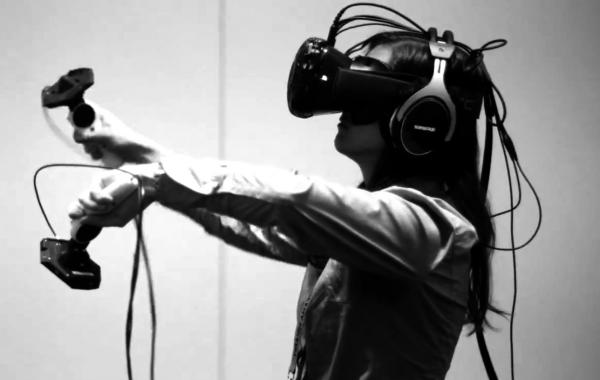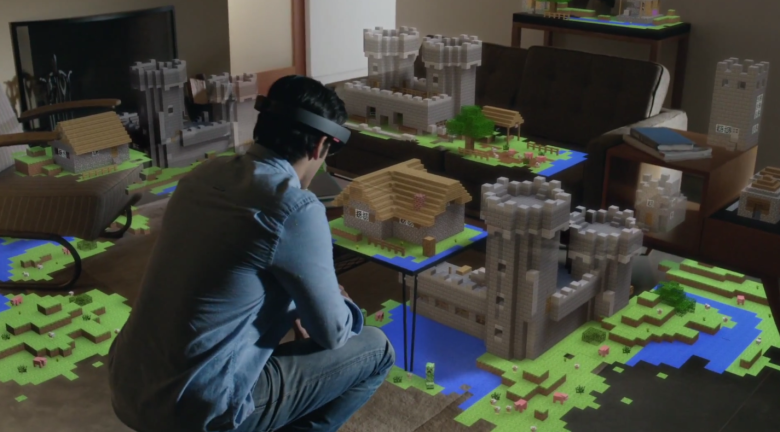The idea of Virtual Reality has existed for a while now, in science fiction and haphazard methods of pulling it off. Yet ever since Oculus Rift kickstarted, a proper future of VR felt within reach. With the race still ongoing each of the major contenders are going toe-to-toe, providing us with what they think is the ideal solution for virtual and augmented reality.
Taking our list of the top 9 Virtual Reality and Augmented Reality headsets, we can divide the competitors into three main groups. There is the Mobile Accessories group, which is focusing on approaching VR as a way to enhance how we interact with our phones. Next comes the Tethered Reality group, which is basically VR devices that require an external input, like your computer or console. Finally we have the Winner’s Circle, which would include Microsoft’s HoloLens for being a stand-alone device that has multiple uses other than gaming.
Mobile Accessories for VR
The idea behind the Mobile Accessories group is to create devices that use your existing phone to create a VR experience. From Google’s $20 Cardboard solution, to Freefly VR’s $79 device, to Samsung Gear VR at $99, these methods focus on your current mobile phone. Despite the prices, the deal breaker is that focusing on mobiles isn’t the right way to prep for the future of virtual reality.
Let me explain that a bit. For instance if the next phone you buy is larger than the Google Cardboard you have, then you will need to upgrade for another $20. Freefly VR can scale the size a bit, but what happens if you get a phone call while using it? Or Samsung Gear VR, which has a sleek design for its group, but isn’t very user friendly in terms of control? Plus it is made for Note 5 to Gear 7. If you are an iPhone user, or have an older Android model, then you are out of luck.
The second place group, Tethered Reality, instead focuses on your computer and console, which is more lasting.
For a Tethered Reality
Straight off the bat, the major perk of mobile accessories is that they can be used outside in public. The Tethered Reality group consists of devices that require you to be at home to play. The FOVE VR, Oculus Rift, PlayStation VR, and HTC Vive all either require a gaming computer,Xbox, or PlayStation 4 to use.

These devices will enhance your playing. But if you are planning to use your computer and lack the specs to do so, you will run into issues like ragged transitions or bad frames-per-second.
As mentioned earlier each device has their own individual pro’s and cons. While the FOVE VR tracks your eyesight, the experience itself doesn’t compare to its competitors. The PlayStation VR and Oculus Rift both allow you to step into a first person view as you play existing PlayStation or Xbox games. But the PlayStation VR has a 5 meter cable, and there is talk about a PlayStation 4.5 coming out to provide a better experience. HTC Vive has a huge selection of Steam Games, but is both more expensive than its competitors and needs more space to get the full experience it has to offer.
All that said, what these devices do have that the Mobile Accessories group doesn’t is that the Tethered Reality group does not need to be replaced when the next console tier or PC upgrade steps in. Yet both groups focus on purely the media and entertainment sectors, which is a major distinction compared to the final group.
The Winner’s Circle
Keeping in mind that since the race isn’t over yet, and that someone can still easily steal first place, Microsoft’s HoloLens remains as the sole contender in the final group. The HoloLens focuses on delivering both an augmented reality and a virtual one, borrowing from the strong characteristics of the earlier groups.
In Mobile Accessories, the strong point is that the device is virtually usable anywhere. But where you can’t see what is in front of you, with the HoloLens you can. In comparison to the Tethered Reality group, the HoloLens does not need an external computer or console to be used. Using it’s own Windows 10 powered computer, it has a standby time of around 2 weeks, and a usage time of up to 5.5 hours.
What the others lack and Microsoft’s product excels in, is that your investment is not limited to just gaming and watching movies. The HoloLens has industrial uses in addition to domestic. Through being able to do a walking Skype call, or in terms of checking out an architectural building in real time view, what we have is a combined package.
Another huge difference between this Winner’s Circle and the two earlier groups is that the augmented reality that you are viewing, whether in a game or for work, is not limited to just you. If someone else is using the HoloLens, they can also interact or play games alongside you.
The HoloLens is controllable through voice recognition software and gestures. As something that VR should emphasize on, it levels the playing field for people with disabilities and is something we should be seeing more from Microsoft’s competitors.
But remember, this is a fresh system
Microsoft’s HoloLens may be first in the race at the moment, but there are reasons why we can’t say that the VR race is over. The price is one major aspect, with the HoloLens Developer’s version being set at $3,000. While this comes out on the 30th, the consumer version is set to come out around Christmas.
As for existing games, Microsoft has included three basic games with the Developer set. You can find released tutorials to create your own here. You can also play games from your Xbox one on to your HoloLens, but there is not much detail on how immersive that is in comparison to the competitors.
If you are looking for a VR set for gaming and can’t wait till winter, then your best bet would be to go for Valve’s HTC Vive. But if you are looking for a device that allows you to do more, then this is the device you should keep in mind.
Remember, the VR race isn’t yet finished. In order to win, the VR device should be multi-use, have a decent battery life, and be cheap enough for the masses. If there is a device that can do all of that, then it will undoubtedly win first place in the VR race. But until then the Microsoft HoloLens is a step in the right direction for this industry, and you can find out how to order yours here.








Published: Mar 24, 2016 12:00 pm